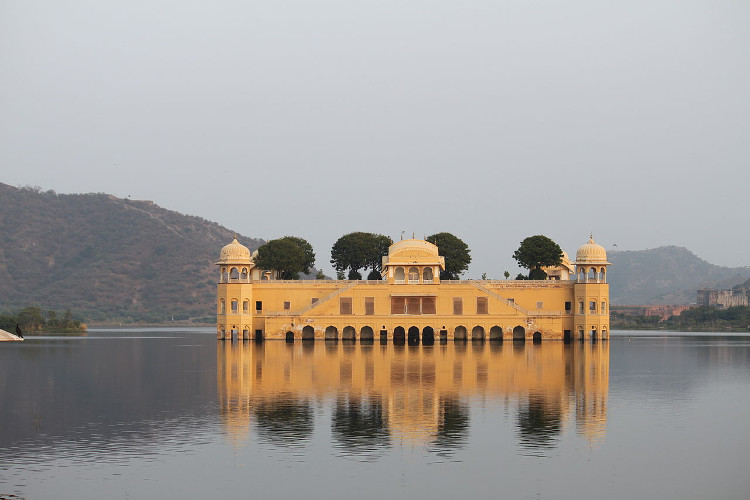Unique architecture of the semi-submersible palace floating on the lake
Jal Mahal marble palace almost completely submerged under the lake water in Jaipur, India, only to reveal the roof and the top floor, forming a rare wonder.
Jal Mahal , a beautiful marble palace also known as the "Water Palace" rises above the artificial lake water in Jaipur city in Rajasthan state, according to Amusing Planet.

Jal Mahal Palace in the middle of the lake.(Photo: Flickr).
The palace was built in the 18th century by Maharaja Madho Singh, who ruled Jaipur for duck hunting parties. After his successor son died, the palace was abandoned for two centuries until it was restored in the 2000s.
Jal Mahal is a 5-storey building that is very curious because of its unique architecture with a top floor floating on the lake, and 4 lower floors almost completely flooded when the lake is full of water.
Jal Mahal's architecture blends Hindu, Muslim and Persian styles. The hallways and halls are decorated with many beautiful paintings. On the terrace of the palace is a rectangular hanging garden named Chhatri with a covered walkway. In each corner, there is a semi-octagonal shaped tower with an elegant dome.
Man Sagar artificial lake surrounded the palace was born in 1610 under Raja Man Singh's rule to deal with severe hunger and water shortage in the state in the late 17th century. For decades, this reservoir provide drinking water and irrigation for local residents. This is also the home of many birds.
By the 20th century, Man Sagar Lake became a place to discharge untreated wastewater and other industrial waste. In 2004, a private company took responsibility for dredging the lake and restoring the palace, helping to improve water quality and attracting birds back.
- Rare photos of the 130-year-old Mandarin Palace are in danger of being knocked down in Saigon
- Admire the 10 most magnificent palaces in the world
- Explore the deep sea by Cyclops submersible
- Museum 800m2 on top of Chinese cliffs
- 10 famous architecture projects in Saigon
- Japan develops the deepest dive ship in the world
- Explore the magnificent Royal Palace of Japan
- See the strange architecture of the hotel floating in the river in Sweden
- The magnificent 1,600-year-old architecture is hidden under Turkish lake
- Palace for the insane
- Unique architecture of the Cat mansion
- Admire the beautiful summer palace in Russia
 Norway built the world's tallest wooden tower
Norway built the world's tallest wooden tower Kremlin
Kremlin Ashurbanipal: The oldest royal library in the world
Ashurbanipal: The oldest royal library in the world Decoding the thousand-year construction of Qin Shihuang shocked the world
Decoding the thousand-year construction of Qin Shihuang shocked the world